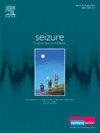Delivery of care, anti-seizure medication adherence and factors affecting seizure outcomes in women with epilepsy during pregnancy: a retrospective cohort study
IF 2.8
3区 医学
Q2 CLINICAL NEUROLOGY
引用次数: 0
Abstract
Objective
The rate of maternal mortality and obstetric complications amongst women with epilepsy during pregnancy is higher than that of the general population. The reason for this remains unclear but poor access to epilepsy specialist in a timely manner, poor medication adherence and falling levels of ASM are often stated within the published literature. We aim to explore whether this assumption is correct and consider the influence that clinical and epidemiological factors have on outcomes.
Methods
Pregnant women with epilepsy were identified between January 2015 and June 2022 from the local obstetric register. Key clinical features were identified following a manual review of patient records. Demographic information, scheduled and unscheduled secondary care contact, maternity care and medication dispensing history were obtained from routinely collected health datasets. An adverse outcome was defined as a reported seizure or epilepsy-related hospital contact during pregnancy or within 12-weeks postpartum.
Results
We identified 458 pregnancies from 336 WWE. An adverse epilepsy related outcome was observed in 212/458 (46%) pregnancies. Review during the pre-booking period was noted in 189/458 (41.2%) cases and during pregnancy in 302/458 (65.9%). The most common ASM monotherapy was levetiracetam (LVT)(152/285 pregnancies, 53.3%) followed by lamotrigine (LTG) (110/285 pregnancies, 38.6%). Overall, exposure to polytherapy, LTG exposure, a seizure during the preconception period and low socioeconomic status were associated with an adverse outcome.
Conclusion
An epilepsy related admission or reported seizure was commonly experienced in WWE during pregnancy and in a small proportion of women this came after a period of seizure freedom. There is much work to be done to improve outcomes in women with epilepsy during pregnancy and the low rates of pre-conception care remain a concern. Routine preconception care would potentially allow complex issues such as ASM adherence, potential falling levels of ASM in pregnancy, driving and teratogenicity to be considered. Although seizure freedom is not possible for a significant proportion of women (both during the preconception period and pregnancy) early review in the preconception period and throughout pregnancy is likely to ensure epilepsy control is optimum and all potentially modifiable factors are considered.
妊娠期癫痫患者的护理交付、抗癫痫药物依从性和影响癫痫发作结局的因素:一项回顾性队列研究
目的妊娠期癫痫患者的产妇死亡率和产科并发症发生率高于一般人群。造成这种情况的原因尚不清楚,但在已发表的文献中经常提到,难以及时获得癫痫专科医生的治疗,药物依从性差以及ASM水平下降。我们的目的是探讨这一假设是否正确,并考虑临床和流行病学因素对结果的影响。方法选取2015年1月至2022年6月在当地产科登记中发现的癫痫孕妇。主要的临床特征是在对患者记录进行人工审查后确定的。从常规收集的健康数据集中获得人口统计信息、预定和非预定的二级保健接触、产妇保健和药物配药史。不良结果定义为妊娠期间或产后12周内报告的癫痫发作或与癫痫相关的医院接触。结果我们从336例WWE中确定了458例妊娠。458例妊娠中有212例(46%)出现癫痫相关不良结局。189/458例(41.2%)和302/458例(65.9%)在预约前进行了复查。最常见的ASM单药治疗是左乙拉西坦(LVT)(152/285例妊娠,53.3%),其次是拉莫三嗪(LTG)(110/285例妊娠,38.6%)。总体而言,暴露于多种治疗、LTG暴露、孕前发作和低社会经济地位与不良结果相关。结论癫痫相关入院或癫痫发作在妊娠期WWE患者中很常见,并且在一小部分妇女中癫痫发作是在一段时间后发生的。要改善怀孕期间癫痫妇女的预后,还有很多工作要做,孕前护理率低仍然是一个令人关切的问题。常规的孕前护理可能会考虑到一些复杂的问题,如ASM依从性、妊娠期ASM可能下降的水平、驾驶和致畸性。虽然很大一部分妇女(孕前和怀孕期间)不可能不癫痫发作,但在孕前和整个怀孕期间进行早期检查可能确保癫痫控制达到最佳状态,并考虑到所有可能改变的因素。
本文章由计算机程序翻译,如有差异,请以英文原文为准。
求助全文
约1分钟内获得全文
求助全文
来源期刊

Seizure-European Journal of Epilepsy
医学-临床神经学
CiteScore
5.60
自引率
6.70%
发文量
231
审稿时长
34 days
期刊介绍:
Seizure - European Journal of Epilepsy is an international journal owned by Epilepsy Action (the largest member led epilepsy organisation in the UK). It provides a forum for papers on all topics related to epilepsy and seizure disorders.
 求助内容:
求助内容: 应助结果提醒方式:
应助结果提醒方式:


